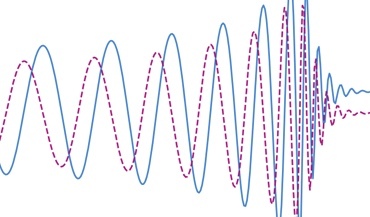 Gravitational memory and spacetime symmetries
Gravitational memory and spacetime symmetries
Symmetries of spacetime infinitely far away from gravitational fields may hint at new laws of nature
Boris Goncharov, Daniel Reardon, Ryan Shannon, Xing-Jiang Zhu, Eric Thrane and the PPTA
arXiv.org | MNRAS journal | Code repository (GitHub)
Pulsar timing arrays monitor pulse arrival times from millisecond radio pulsars with the main goal to detect the stochastic nanohertz gravitational-wave background from supermassive black hole binaries. As data sets get larger and radio-telescopes become more sensitive, new sources of noise appear. We find and characterize these new sources of noise with the second data release (DR2) of the Parkes Pulsar Timing Array (PPTA). Our models will help gravitational-wave searches and open new pathways to study pulsars and the interstellar medium. We find:
 Gravitational memory and spacetime symmetries
Gravitational memory and spacetime symmetries
Symmetries of spacetime infinitely far away from gravitational fields may hint at new laws of nature
 The nanohertz gravitational wave background
The nanohertz gravitational wave background
Is the common-spectrum process observed with pulsar timing arrays a precursor to the detection?